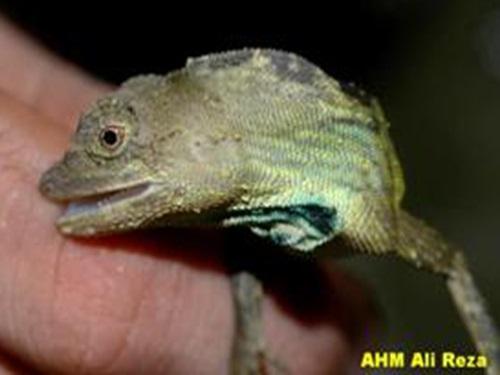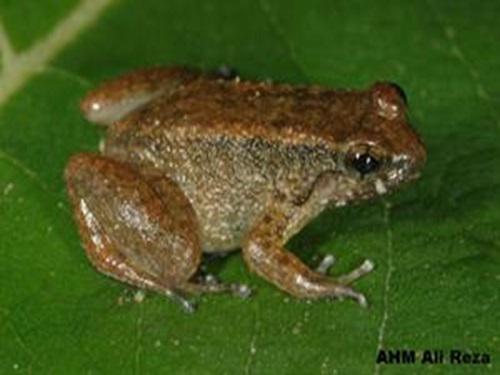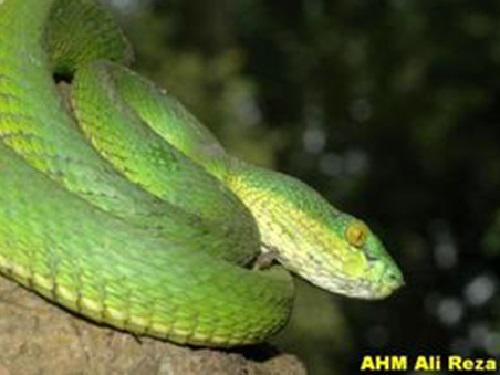AHM Ali Reza
Other projects
This herpetofaunal research and conservation project, conducted by the Bangladeshi students with support from western experts, aims to prepare an updated species list with proper geographic range to prioritize most species diverse habitat types in Bangladesh for immediate conservation measures.

Ptyctolaemus gularis.
Situated in tropical Asia, Bangladesh is a global ‘Biodiversity Hotspot’ containing a unique and highly diverse biota in a wide range of poorly unexplored habitats. IUCN Bangladesh (2000) reported 22 species of amphibians and 109 species of reptiles from the country. However, 85% of the total reported species are facing conservation threats of various kinds and more than 43% are categorized as ‘Data Deficient’, indicating lack of even basic information. This is obviously an underestimate since survey effort has been limited to few studies, mostly conducted over a century back. Rapidly escalating human demands for natural resources are causing population, species, and ecosystems to disappear at an alarming and unprecedented rate. With 147 million people occupying roughly the same area as Iowa, Bangladesh is among the most densely populated nations on the earth. In such an overpopulated landmass, making a plan to conserve its entire natural habitats is an ambitious objective.

Occidozyga borealis.
My research project was planned to prioritize the forest habitats based on their herpetofaunal species richness and initiate immediate conservation measures on the selected highly diverse and critically important ones. To ensure its long-term and successful conservation goal, the project is being implemented by all Bangladeshi students with support from western experts. So far, the research team recorded roughly 85 species of amphibians and reptiles which included at least 15 additional species for the country. Taxonomic research (following morphometry and genetic study) and habitat prioritization work (using Maxent software package) are still in progress but however, initial result indicates at least one presently undescribed frog species and several others believed to be endemic to the neighboring countries. Six scientific papers have been published in international peer reviewed scientific journals and few others are under preparation. Several technical presentations were delivered on the project findings to the audiences at different research and academic organizations at home and abroad.

Cryptelytrops albolabris.
The project is training two graduate students from the local university and funding their research on the herpetofauna of Bangladesh. The project believes local electronic and print media is a strong forum to convey conservation messages to the stakeholders. The project leader spoke on the importance of herpetofaunal conservation in several television programs which have been aired globally, mostly among Bangladeshi community. Local print media published the research in Bangladesh and highlighted the success stories.
The project requires additional time and resources to continue locating additional species for better documenting and quantifying the taxa already found to rank different habitats types based on their diversity as well as continue the conservation activities already started in Bangladesh.